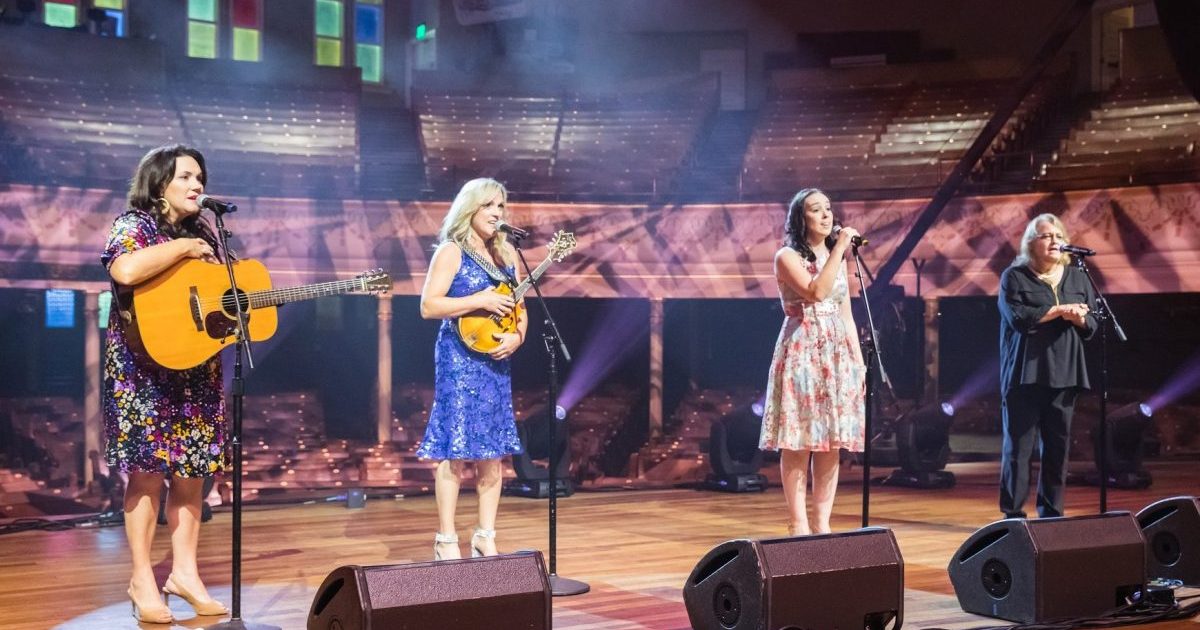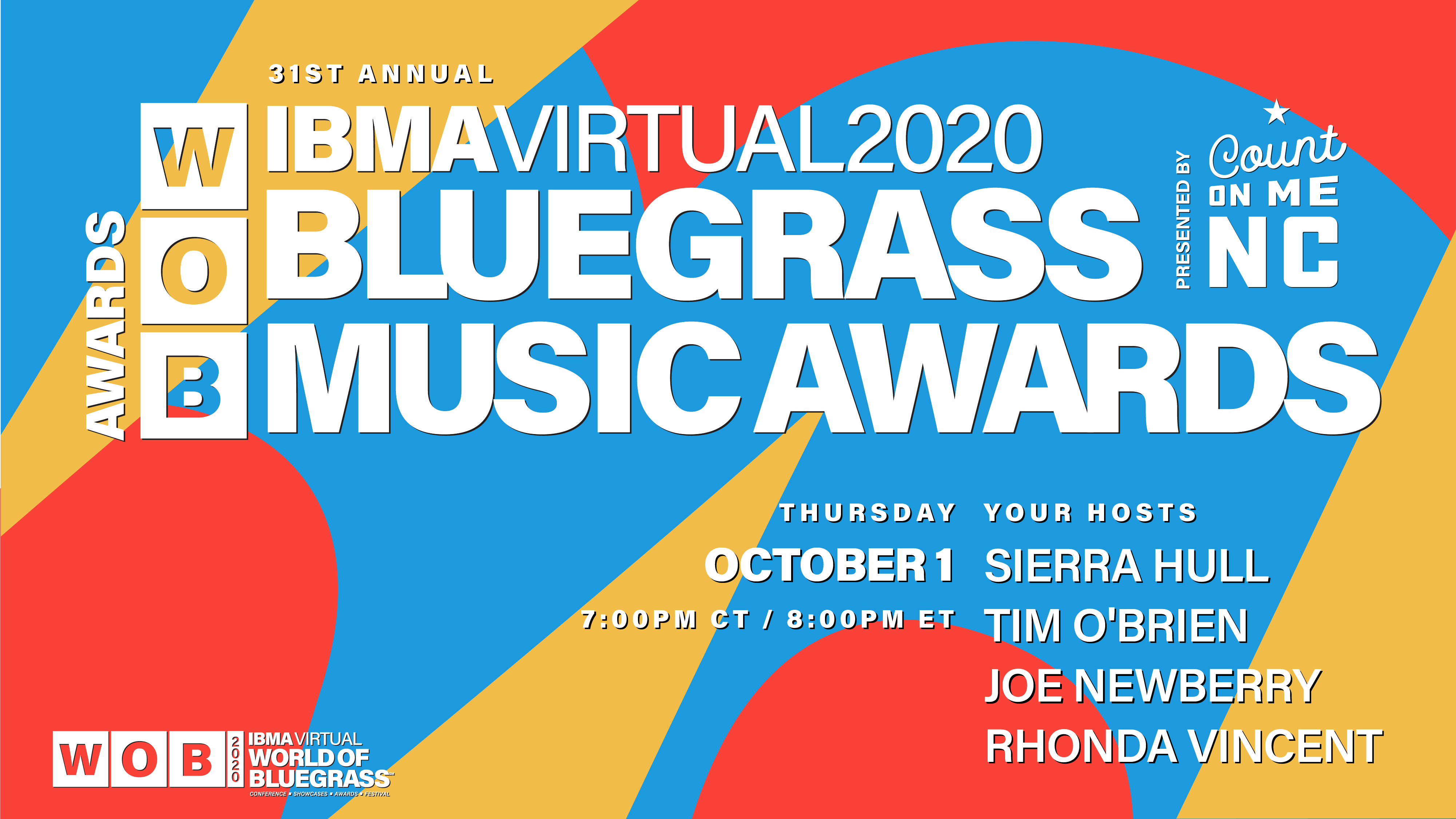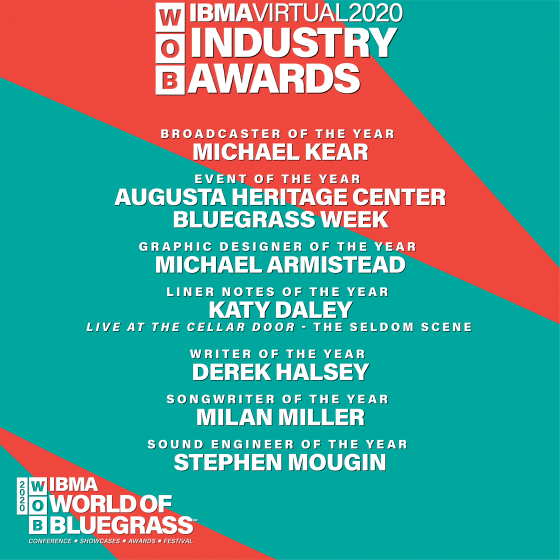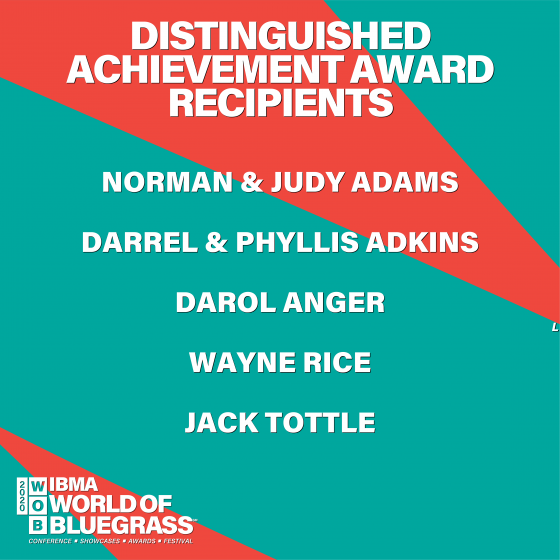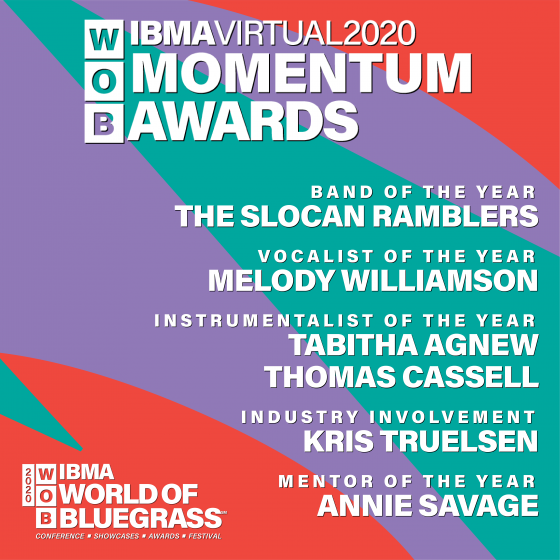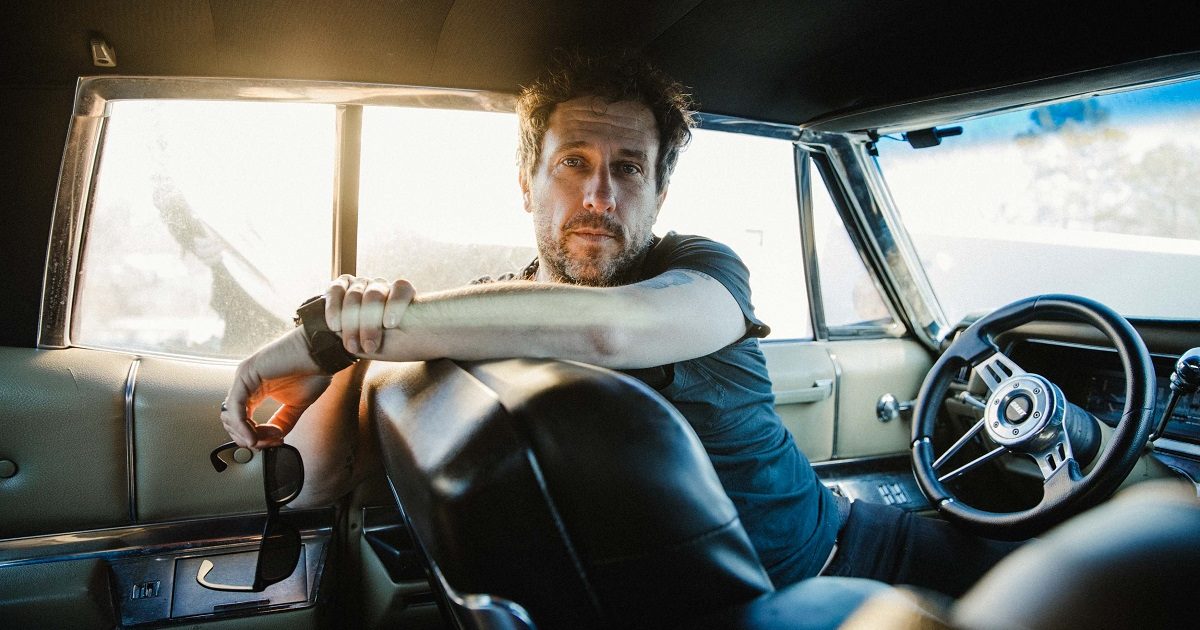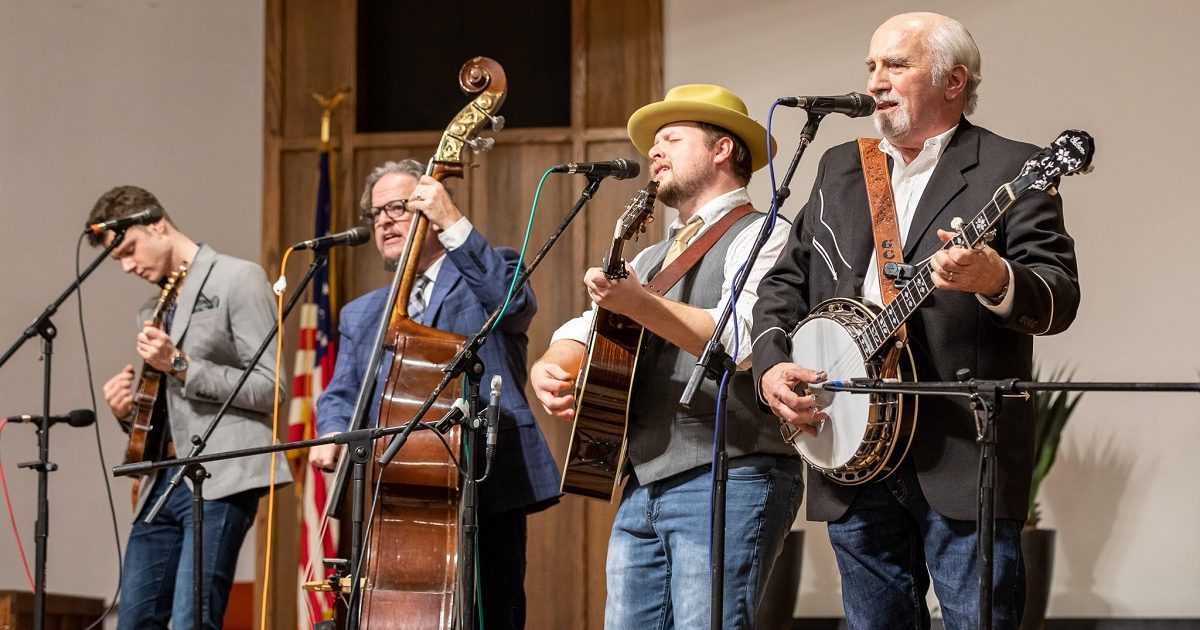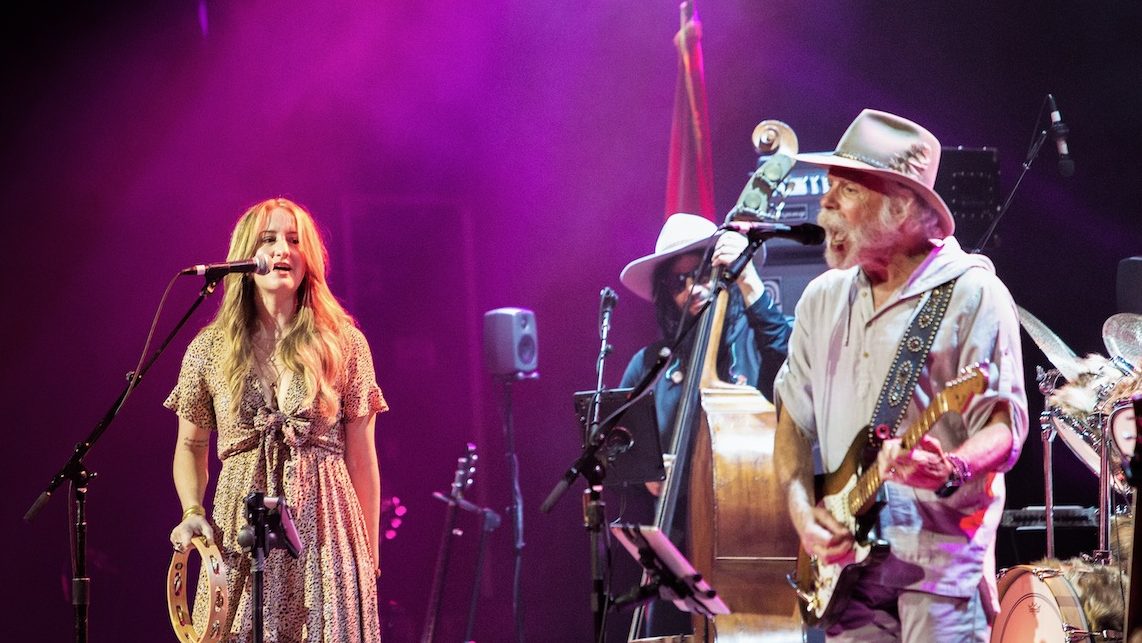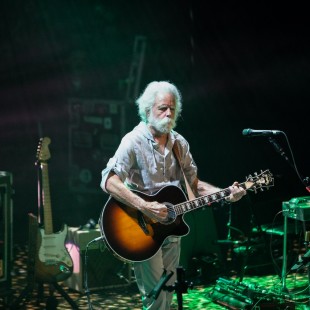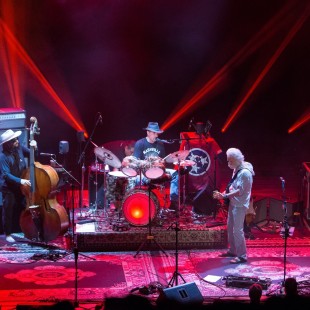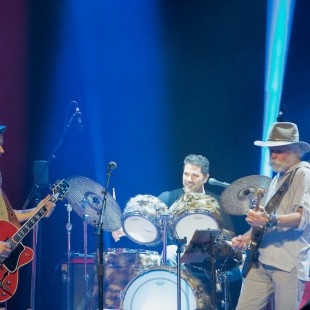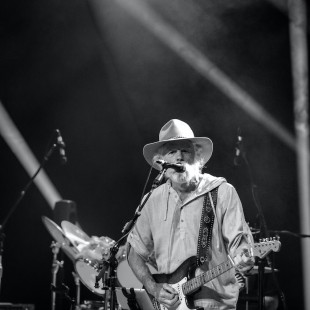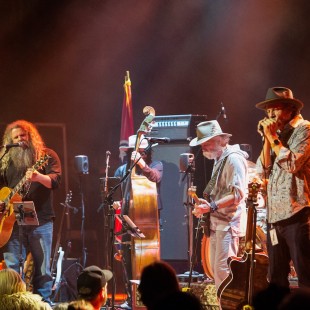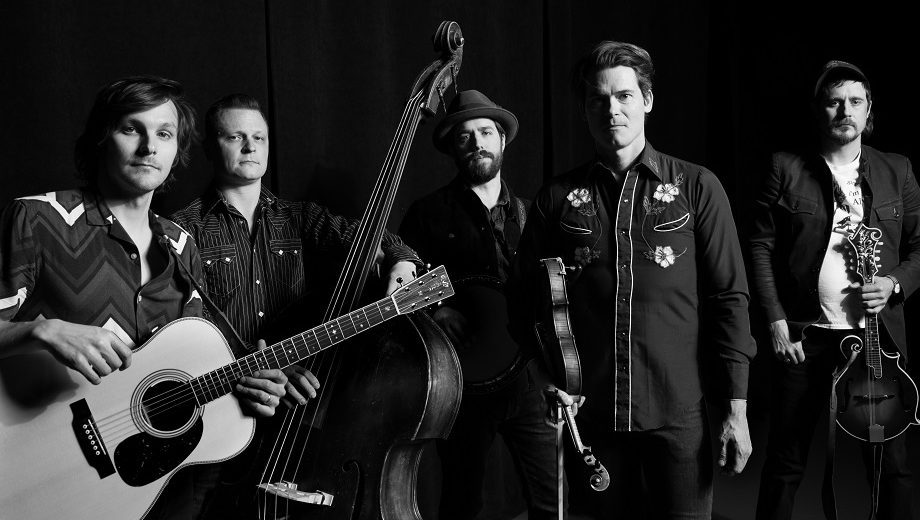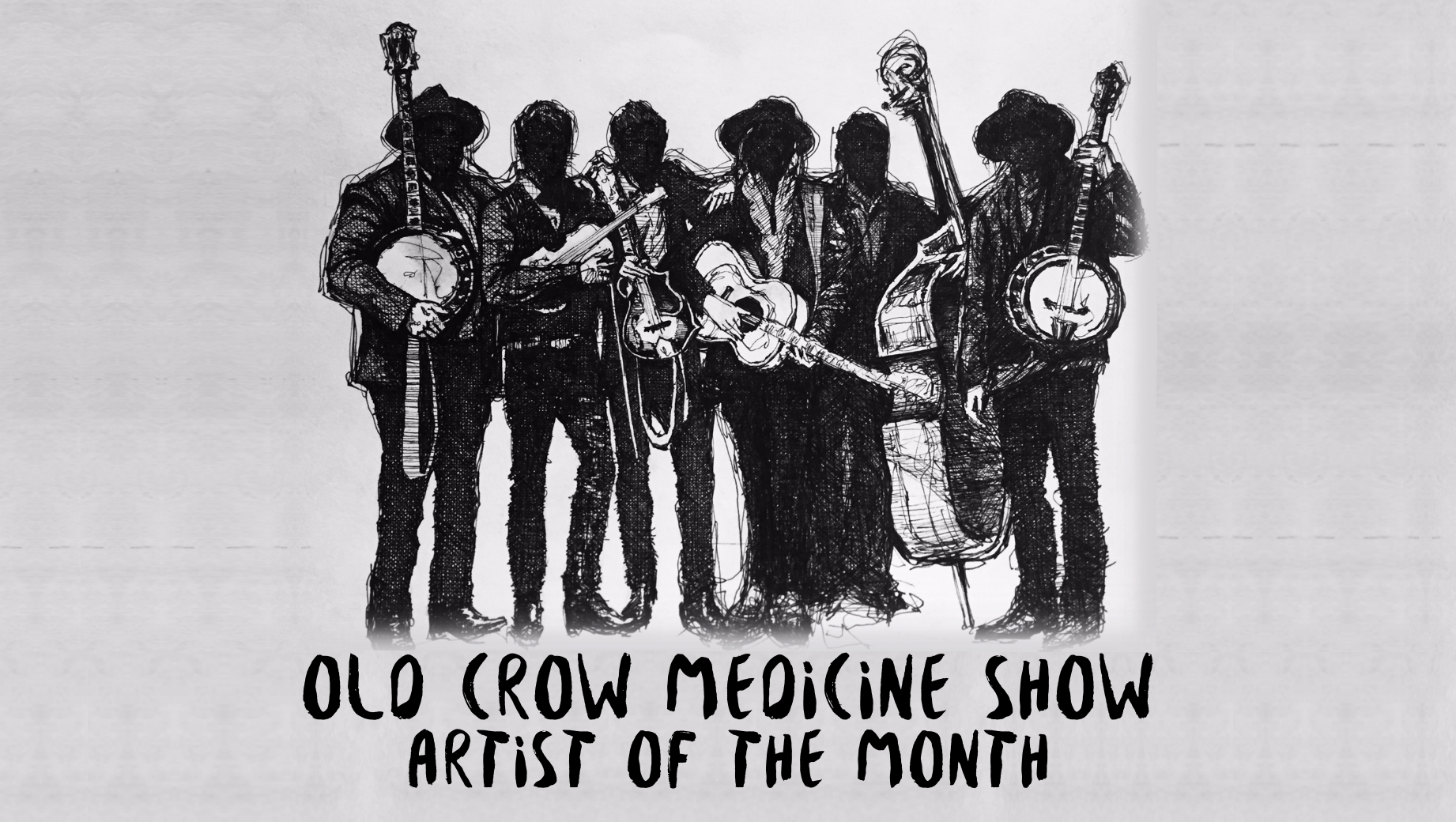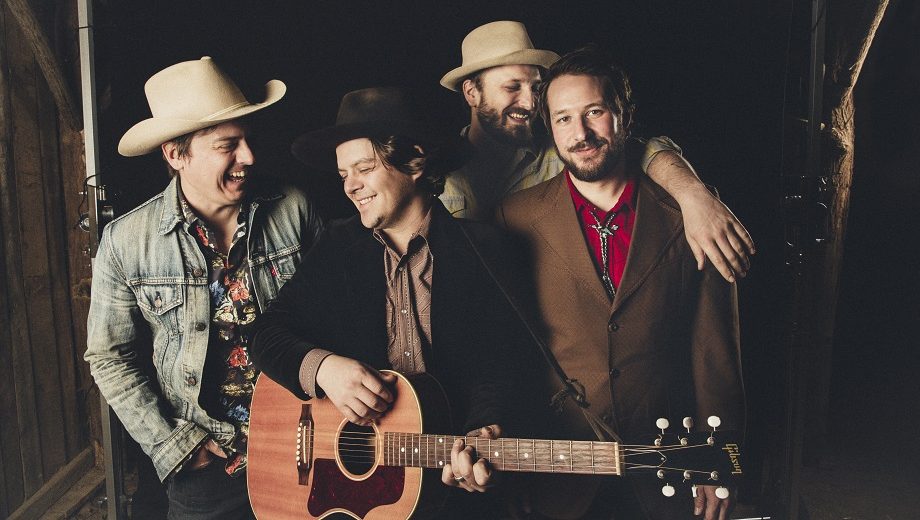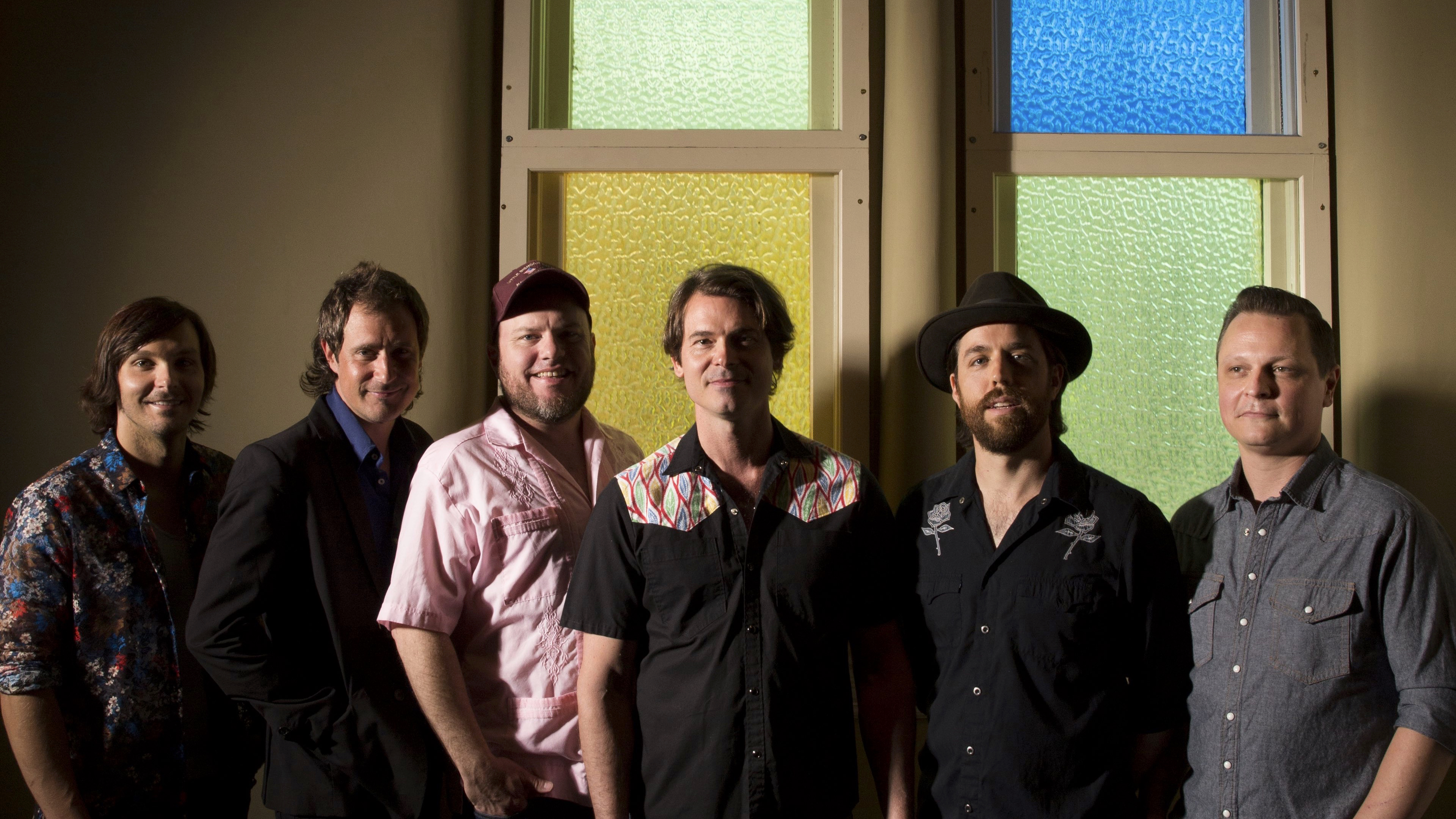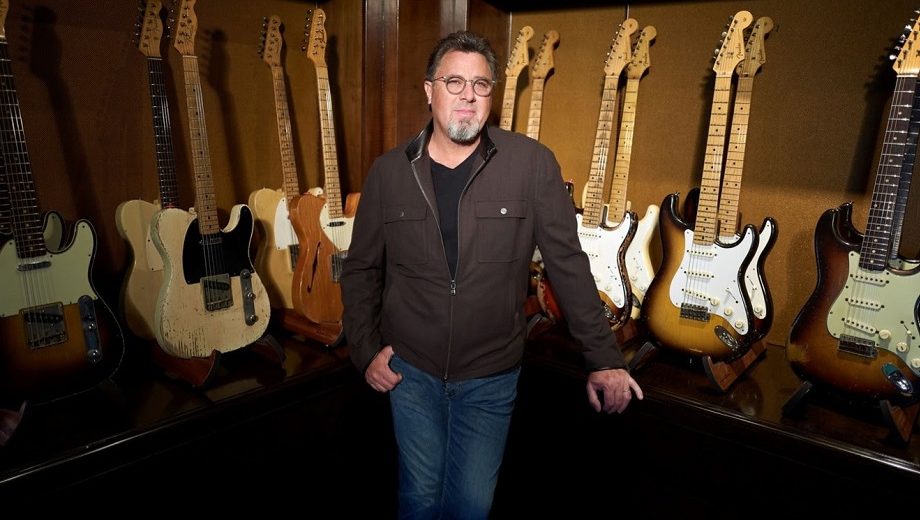The winners of the 31st annual IBMA Bluegrass Music Awards were announced Thursday night via video awards show, hosted by Sierra Hull, Tim O’Brien, Joe Newberry, and Rhonda Vincent.
The “biggest night in bluegrass” was well-adapted to its virtual setting and boasted three Hall of Fame inductions, guitar and banjo tributes to Doc Watson and J.D. Crowe, a continent-spanning collaboration by Rob Ickes & Trey Hensley and Taj Mahal, and celebrations of the 20th anniversary of O Brother, Where Art Thou? and the 75th anniversary of the birth of bluegrass. Marking the occasion, Del, Ronnie, and Rob McCoury opened the evening from an empty Ryman Auditorium, regarded as the birthplace of bluegrass and a former home for the show.
Special performances were shot live at home, in studios, and at various small venues — as well as the Station Inn and the Ryman. Billy Strings paid tribute to Hall of Famer and Male Vocalist of the Year nominee, Larry Sparks, with a cover of “John Deere Tractor” — with double pickguards, to boot. In the Doc Watson tribute, each of the five Guitar Player of the Year nominees (Trey Hensley, Billy Strings, Bryan Sutton, Molly Tuttle, and Jake Workman) took their turn virtually swapping solos on “Black Mountain Rag,” with T Michael Coleman, Watson’s longtime friend and bandmate, holding them all together through the webcams and headphones. Many other unique collaborations, tributes, and performances were peppered throughout the award announcements. The most stunning performances, though — like Vocal Group of the Year and Entertainer of the Year winner Sister Sadie’s “900 Miles” — were from the mother-church setting of the Ryman, where in a pandemic twist, the bands each performed not facing an audience, but with the auditorium’s empty pews as a background.
As IBMA Executive Director Paul Schiminger put it in his speech from the Ryman stage, in a virtual conference year and a pandemic, returning to the birthplace of the genre was “an unexpected gift through it all.” 75 years of bluegrass were poignantly brought together beneath the rafters of the hallowed, though empty, Ryman Auditorium.
Here are the winners of the 2020 IBMA Bluegrass Music Awards, in the order they were announced:
New Artist of the Year
Mile Twelve
Instrumental Group of the Year
Michael Cleveland & Flamekeeper
Gospel Recording of the Year
“Gonna Rise and Shine”
Artist: Alan Bibey & Grasstowne
Label: Mountain Fever Records
Producer: Mark Hodges
Banjo Player of the Year
Scott Vestal
Resophonic Guitar Player of the Year
Justin Moses
Fiddle Player of the Year
Deanie Richardson
Bass Player of the Year
Missy Raines
Mandolin Player of the Year
Alan Bibey
Guitar Player of the Year
Jake Workman
Collaborative Recording of the Year
“The Barber’s Fiddle”
Artists: Becky Buller with Shawn Camp, Jason Carter, Laurie Lewis, Kati Penn, Sam Bush, Michael Cleveland, Johnny Warren, Stuart Duncan, Deanie Richardson, Bronwyn Keith-Hynes, Jason Barie, Fred Carpenter, Tyler Andal, Nate Lee, Dan Boner, Brian Christianson, and Laura Orshaw
Label: Dark Shadow Recording
Producer: Stephen Mougin
Instrumental Recording of the Year
“Tall Fiddler”
Artist: Michael Cleveland with Tommy Emmanuel
Label: Compass Records
Producers: Jeff White, Michael Cleveland, and Sean Sullivan
Vocal Group of the Year
Sister Sadie
Song of the Year
“Chicago Barn Dance”
Artist: Special Consensus with Michael Cleveland & Becky Buller
Writers: Becky Buller, Missy Raines, Alison Brown
Label: Compass Records
Producer: Alison Brown
Album of the Year
Live in Prague, Czech Republic
Artist: Doyle Lawson & Quicksilver
Label: Billy Blue Records
Producers: Doyle Lawson and Rosta Capek
Female Vocalist of the Year
Brooke Aldridge
Male Vocalist of the Year
Danny Paisley
Entertainer of the Year
Sister Sadie
Also honored during the broadcast were three inductees into the Bluegrass Music Hall of Fame: owner of the Station Inn, J.T. Gray, The Johnson Mountain Boys, and New Grass Revival.
The Industry Awards were held on Wednesday, September 30. Hosted this year wittily and absurdly in video format by Béla Fleck and Abigail Washburn, the Industry Awards recognize outstanding professional work within the many arms and branches of the bluegrass industry at large.
The Industry Awards recipients:
Broadcaster of the Year
Michael Kear
Event of the Year
Augusta Heritage Center Bluegrass Week, Elkins, WV
Graphic Designer of the Year
Michael Armistead
Liner Notes of the Year
Katy Daley, Live at the Cellar Door – The Seldom Scene
Writer of the Year
Derek Halsey
Sound Engineer of the Year
Stephen Mougin
Songwriter of the Year
Milan Miller

The recipients of the Distinguished Achievement Awards, honoring lifelong contributions by forerunners and ambassadors for bluegrass music, were honored with presentations on Wednesday as well:
Norman & Judy Adams, Adams Bluegrass Festivals
Darrel & Phyllis Adkins, Musicians Against Childhood Cancer
Darol Anger, fiddler/educator
Wayne Rice, San Diego’s KSON “Bluegrass Special” host
and Jack Tottle, band leader and educator at East Tennessee State University.

The Momentum Awards, handed out via video ceremony on Tuesday, September 29, focus on artists and industry professionals who are in the early stages of their bluegrass careers and the mentors who have helped them reach their young success.
The Momentum Awards recipients:
Industry Involvement
Kris Truelsen
Mentor
Annie Savage
Instrumentalist (2 recipients in this category)
Thomas Cassell
Tabitha Agnew
Vocalist
Melody Williamson
Band
The Slocan Ramblers

